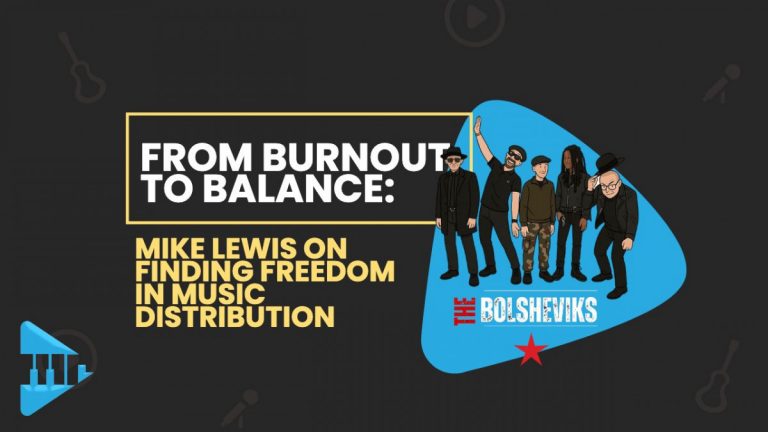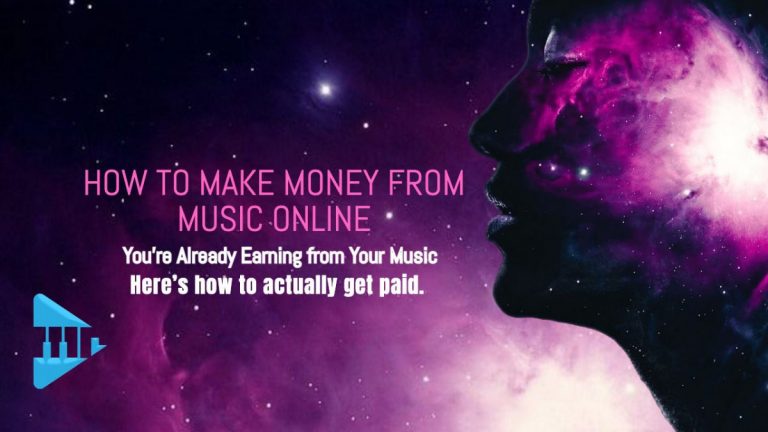What Does EP Stand For in Music? A Clear Guide for Artists.
Table of Contents
ToggleKey Takeaway: What Does EP Stand For in Music?
EP = Extended Play — a release that’s longer than a single but shorter than a full album.
For indie artists, it’s more than a format — it’s a strategy.
Here’s what you need to know:
- EPs typically include 3–6 songs, under 30 minutes total
- Perfect for testing sounds, building momentum, or reintroducing your style
- Distributors and streaming platforms have their own rules — follow them to avoid mislabeling
- Don’t just upload — protect your rights, splits, and royalties before release
- A well-planned EP can lead to sync placements, playlist adds, and fan growth
Four tracks on the board. Almost done. Not quite an album. Definitely more than a single.
You ask yourself: Is this an EP? And if it is — what the hell am I supposed to do with it?
Let’s clear the smoke.
What Does EP Mean in Music?
EP stands for Extended Play — a format sitting between a single and an album. If you’ve been asking what does EP stand for in music or what is EP in music, here’s your answer. Most EPs clock in at 3 to 6 songs, usually under 30 minutes total.
In music terms, the EP meaning is more than just technical. It’s a statement. A mood. A snapshot of where you are as an artist — without needing to make a full album commitment.
Think of it as your calling card.
Why Release an EP Instead of an Album?
EPs are lighter, quicker, and cheaper to produce. Perfect for indie artists building momentum. They let you:
- Drop consistent music without the pressure of a full album
- Experiment with new sounds or themes
- Build a story arc across multiple releases
- Pitch to playlists (yes, EP tracks still qualify)
They’re also easier to market, license, and repurpose — three big wins for any DIY artist.
EPs are a perfect testing ground — you can find your audience, test your sound, and refine your story without burning out or going broke.
In 2025, the EP isn’t just a format — it’s a flexible tool for artists who want freedom over perfection. Whether you’re experimenting with genre, building toward an album, or syncing music to visual content, the EP gives you room to move without waiting for a massive rollout.

How Many Songs Make an EP?
Wondering how many songs in an album vs EP? There’s no one-size rule, but here’s the breakdown:
| Format | Song Count | Total Length |
| Single | 1 | Under 10 min |
| EP (Extended Play) | 3–6 | Under 30 min |
| LP (Album / Long Play) | 7+ | 30+ min |
Pro tip: Most digital distributors (like DistroKid or TuneCore) classify your release as an EP based on track count and total runtime. For example, DistroKid’s guidelines state that an EP typically has 4–6 tracks and runs under 30 minutes. So stay within those bounds if you want it labeled correctly.
What’s an LP, exactly?
LP stands for Long Play — the traditional name for a full-length album. It’s your full statement. Your front-to-back story. While EPs give a taste, LPs deliver the whole meal.

How Streaming Platforms Categorize EPs
Platforms like Spotify and Apple Music classify EPs using both track count and total runtime. Generally, an EP:
- Contains 3 to 6 tracks
- Runs under 30 minutes in total length
If your release exceeds these limits, it may automatically be labeled a single or an album instead.
Tip: Even if your project feels like an EP to you, platforms use these guidelines behind the scenes — so check before you distribute.
Real-World Examples: EPs That Launched Careers
RAYE (UK): In 2014, at just 17 years old, RAYE self-released her debut EP, Welcome to the Winter, on SoundCloud. This seven-track project showcased her R&B and hip-hop influences and caught the attention of Polydor Records, leading to her signing. After parting ways with Polydor in 2021, she independently released My 21st Century Blues in 2023 — earning seven Brit Award nominations.
Billie Eilish (US): Billie Eilish’s debut EP, Don’t Smile at Me (2017), featured tracks like “Ocean Eyes” and “Bellyache.” It defined her minimalist electropop style and laid the groundwork for her Grammy-sweeping debut album.
Frank Ocean (US): In 2011, after facing industry setbacks, Frank Ocean self-released nostalgia, ULTRA online for free. The EP’s genre-blurring sound and emotionally raw lyrics earned widespread acclaim and laid the path to his major-label debut Channel Orange. Read more about it here.
Doja Cat (US): Before chart-toppers like “Say So,” Doja Cat released her debut EP Purrr! in 2014. The five-track project introduced her experimental, genre-mixing style. Though it didn’t gain instant fame, it planted the seeds for her future viral success. Read the backstory.
These stories show how EPs can establish your identity, build momentum, and turn listeners into lifelong fans — whether you’re the artist, the producer, or both. You don’t need a label deal or perfect polish — just vision, execution, and ownership.
Common EP Launch Mistakes to Avoid
Even with solid music, an EP can fall flat if the rollout’s rushed or sloppy. Here are the mistakes I’ve seen — over decades in publishing, sync, and indie artist development — that can kill momentum before you even get started:
❌ Dropping without a plan
Uploading to DSPs isn’t a launch strategy. If you’re not building anticipation, pitching early, or syncing the release with content — it’s just a quiet upload.
❌ Forgetting the paperwork
No splitsheet? No metadata? That’s how royalties go missing. Set your admin up before the first stream drops — not when someone asks, “Hey, did you register that?”
❌ Skipping platform rules
Spotify, Apple Music, and others have specific EP guidelines. Get it wrong, and your EP might show up as a single or an album — which affects discovery and playlisting.
❌ Weak visuals or outdated EPK
Blurry cover art. No new bio. No links that work. These little gaps make you look unready — even when the music slaps.
❌ Waiting too long to follow up
You dropped it. Congrats. Now what? An EP should open a door — not close one. Keep the story going: behind-the-scenes content, tour clips, lyric videos, fan Q&As.
Mistakes don’t mean failure — but fixing them early means more reach, more revenue, and more respect.
When’s the Best Time to Release an EP?
There’s no one perfect season — but there are smart times to drop.
✅ If you’re new? Drop an EP early to show range and build your catalog.
✅ Rebranding or switching styles? Use an EP to reintroduce your sound.
✅ Coming off a tour or viral moment? Strike while your audience is warm.
Some artists release EPs as seasonal snapshots. Others use them as part of a long-play strategy — one EP per quarter, leading to a full album.
Some artists also time their EPs to land before editorial pitching windows on DSPs (Spotify’s playlist submission tool asks for 4 weeks’ notice). Others look at timing around tour announcements, press cycles, or sync season.
Rushing a release — before your splits, metadata, or promo are in place — can cost you royalties, reach, or playlist chances.
Tip: Plan 4–6 weeks ahead. Use the EP to anchor your next phase: visuals, tour dates, fan content, or a new artist bio.
How to Release an EP That Actually Hits
Don’t just upload and hope. Treat your EP like a mini campaign.
A well-prepped EP can open doors — playlists, sync deals, even label attention. Picture an indie artist who lands a sync placement because their splits and metadata were airtight — that could be you. But it starts with doing it right.
We’ve seen too many artists lose royalties just because a split wasn’t written down or a PRO form never got filed. Picture this: your EP lands on a playlist or gets synced — but you miss the check because your rights weren’t set up. That’s avoidable.
Start with this checklist — built for artists who want to get paid, get heard, and stay in control.
Pre-Release EP Checklist: Metadata, Money & Momentum

Every box here = one less royalty headache later.
1. Creative Foundation
2. Credit & Splits
3. Metadata Prep
4. Business & Legal
5. Promotion Prep
6. Rights & Royalties
Need help with splits, metadata or registration? Visit melodyrights.com and let us back up your beats with ownership muscle.
How to Use a Splitsheet (Without Screwing It Up)
If you co-wrote or co-produced even one track on your EP, you need a splitsheet. It’s the simplest way to protect your cut of the royalties — and make sure no one forgets what they agreed to.
Here’s how to do it right:
- List everyone involved — writers, producers, topliners
- Agree on percentage splits — total must add up to 100%
- Write it down — don’t rely on memory or DMs
- Get everyone to sign it — digitally or in writing
Tip: Do this while the energy is good — not three months later when there’s money involved.
Simplify Your EP Release Admin — and Keep Control of Your Rights
The week before your EP drops is chaos — final mixes, promo posts, last-minute doubts. We built Melody Rights to calm the storm on the admin side.
When you’re in the creative zone, we’ve got your back:
✅ Guidance on using split sheet templates to protect you (and your co-writers). Try Songtrust’s free split sheet
✅ Guidance on registering with PROs (like ASCAP, BMI) and SoundExchange in plain English. Read our guide to registering your music
✅ Want one place to manage all your rights, splits, and registrations? Melody Rights helps you track what matters — and shows you how to protect it. Learn more about how it works here.
✅ Designed for independent artists — no gatekeepers, no jargon, just real support
Want help covering your bases? Melody Rights is your rights-side wingman — so you can focus on the music.
We’re not here to sell. We’re here to back your brilliance.
What to Do Next
If you’ve read this far, you’re not just playing around — you’re planning a real release. So here’s what to do next:
- Pick your timeline — map out your release week and work backward
- Download a splitsheet template and talk splits early
- Register your tracks with your PRO and SoundExchange
- Check your metadata — names, ISRCs, songwriters, and credits
- Start your promo calendar — reels, visuals, stories, email
And remember: you don’t need to do it all solo.
With Melody Rights behind you, every stream, sync, and share is covered — no slips, no lost royalties.
FAQs
What does EP stand for in music?
EP stands for Extended Play — a short collection of music, usually 3 to 6 songs, that’s longer than a single but shorter than an album.
How many songs are on an EP?
Most EPs land between 3 and 6 tracks and stay under 30 minutes total — that sweet spot between a single and an album.
Can an EP have 7 songs?
If your EP is 7 songs but under 30 minutes, it might still qualify depending on your distributor’s rules. Some platforms will label it as an album.
How do I distribute my EP?
You can distribute your EP through platforms like DistroKid, TuneCore, or CD Baby — but choosing the right one depends on your goals and budget. We break down the top options in our guide to the best free music distributors for artists.
Do I need to register my EP with a PRO?
Yes — registering each track with a PRO (like ASCAP or BMI) ensures you collect your performance royalties. If you skip this step, you could miss out on money every time your song is streamed, played live, or broadcast. Melody Rights helps guide you through registration.
What rights do I need to protect when releasing an EP?
You need to lock in your splits, metadata, and registrations — including PROs, mechanical royalties (like The MLC), and non-interactive streams (like Pandora). Melody Rights can help you get all of this organized before your release drops. For a deeper breakdown, see our guide to the 4 types of music royalties.
What’s the difference between a single, EP, and album? (EP vs LP vs Single)
Single: 1 track, under 10 minutes
EP: 3–6 tracks, under 30 minutes
Album: 7+ tracks, 30+ minutes
How do I name my EP?
Your EP title should reflect the sound, mood, or story you’re telling — not just your lead single. Keep it memorable, relevant, and easy to spell. If it connects emotionally or visually, it sticks.
Can I sell my EP on Bandcamp or iTunes?
Yes — many artists release EPs on Bandcamp, iTunes, and other platforms alongside Spotify or Apple Music. On Bandcamp, you can set your price, offer downloads, and sell merch bundles.
You don’t need a major label to make a major impact. Just a smart release plan and your rights in order.
Own your EP. Own your moment.
From vinyl to streaming — how the EP has evolved across decades



